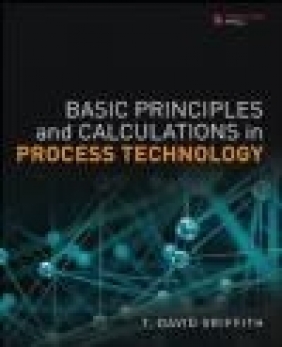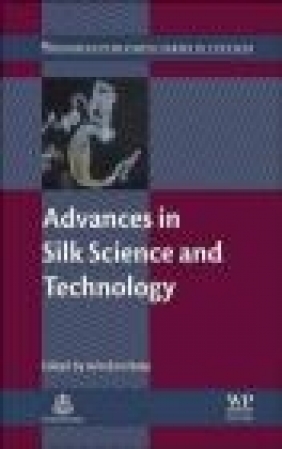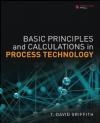Basic Principles and Calculations in Process Technology
David Griffith
Basic Principles and Calculations in Process Technology
David Griffith
- Producent: Prentice Hall
- Rok produkcji: 2015
- ISBN: 9780133388336
- Ilość stron: 648
- Oprawa: Twarda
Niedostępna
Opis: Basic Principles and Calculations in Process Technology - David Griffith
A Practical Guide to Physical and Chemical Principles and Calculations for Today's Process Control Operators In Basic Principles and Calculations in Process Technology, author T. David Griffith walks process technologists through the basic principles that govern their operations, helping them collaborate with chemical engineers to improve both safety and productivity. He shows process operators how to go beyond memorizing rules and formulas to understand the underlying science and physical laws, so they can accurately interpret anomalies and respond appropriately when exact rules or calculation methods don't exist. Using simple algebra and non-technical analogies, Griffith explains each idea and technique without calculus. He introduces each topic by explaining why it matters to process technologists and offers numerous examples that show how key principles are applied and calculations are performed. For end-of-chapter problems, he provides the solutions in plain-English discussions of how and why they work. Chapter appendixes provide more advanced information for further exploration. Basic Principles and Calculations in Process Technology is an indispensable, practical resource for every process technologist who wants to know "what the numbers mean" so they can control their systems and processes more efficiently, safely, and reliably. T. David Griffith received his B.S. in chemical engineering from The University of Texas at Austin and his Ph.D. from the University of Wisconsin-Madison, then top-ranked in the discipline. After working in research on enhanced oil recovery (EOR), he cofounded a small chemical company, and later in his career he developed a record-setting Electronic Data Interchange (EDI) software package. He currently instructs in the hydrocarbon processing industry. Coverage includes * Preparing to solve problems by carefully organizing them and establishing consistent sets of measures * Calculating areas and volumes, including complex objects and interpolation * Understanding Boyle's Law, Charles's Law, and the Ideal Gas Law * Predicting the behavior of gases under extreme conditions * Applying thermodynamic laws to calculate work and changes in gas enthalpy, and to recognize operational problems * Explaining phase equilibria for distillation and fractionalization * Estimating chemical reaction speed to optimize control * Balancing material or energy as they cross system boundaries * Using material balance calculations to confirm quality control and prevent major problems * Calculating energy balances and using them to troubleshoot poor throughput * Understanding fluid flow, including shear, viscosity, laminar and turbulent flows, vectors, and tensors * Characterizing the operation of devices that transport heat energy for heating or cooling * Analyzing mass transfer in separation processes for materials purificationForeword xv Preface xvii Acknowledgments xxi About the Author xxiii Part I: Basic Principles 1 Chapter 1: Introductory Concepts 3 1.1 Using This Book 4 1.2 Steps for Solving a Problem 5 1.3 Degrees of Freedom 12 1.4 Dimensional Consistency and the Dimensional Equation 16 1.5 The Big Four: Unit Operations of Process Technology 17 1.6 Concluding Comments 19 Problems 20 Chapter 2: Areas, Volumes, Complex Objects, and Interpolation 21 2.1 Calculating Areas 22 2.2 Calculating Volumes 28 2.3 Complex Objects: Areas and Volumes 33 2.4 Interpolation and Extrapolation 40 2.5 Concluding Comments 46 Problems 46 Chapter 3: Units of Measure 51 3.1 Time 53 3.2 Length 54 3.3 Volume 55 3.4 Temperature 56 3.5 Mass, Weight, and Force 61 3.6 Vectors 63 3.7 Torque, Moments, and Couples 66 3.8 Density and Specific Gravity 68 3.9 The Mole Unit 69 3.10 Concentrations 72 3.11 Pressure 76 3.12 Work and Power 78 3.13 Accuracy, Precision, and Variance 80 3.14 Engineering Accuracy and Significant Figures 84 3.15 Scientific Notation 85 3.16 The Vernier Scale 86 3.17 Prefixes: M versus m 87 3.18 Concluding Comments 88 References 89 Problems 90 Chapter 4: Gas Laws: Pressure, Volume, and Temperature 93 4.1 Boyle's Law 94 4.2 Charles's Law 96 4.3 Absolute Temperature 97 4.4 The Ideal Gas Law 98 4.5 Real Gases 108 4.6 Volumetric Fractions and Mole Fractions 110 4.7 Standard Conditions 111 4.8 Concluding Comments 112 Appendix 4A: Equations of State 113 Problems 119 Chapter 5: Thermodynamics: Energy, Heat, and Work 123 5.1 Heat and Its Equivalence 127 5.2 The Conservation of Energy and Matter 128 5.3 Work 130 5.4 Heat Capacity 131 5.5 Enthalpy and Internal Energy 135 5.6 Power 138 5.7 Entropy 139 5.8 Reversible versus Irreversible Systems 142 5.9 Functions of State 144 5.10 The Mollier Diagram 145 5.11 Steam Tables 148 5.12 The Entropy of Mixtures 151 5.13 Latent Heat versus Sensible Heat 158 5.14 Free Energy, Chemical Potential, and Entropy 160 5.15 Laws of Thermodynamics 164 5.16 Adiabatic Processes: Compression and Expansion 167 5.17 The Carnot Cycle and Thermodynamic Efficiency 168 5.18 Refrigeration and Heat Pumps 176 5.19 Joule-Thomson Expansion 179 5.20 Turbo-Expanders 181 5.21 Systems 182 5.22 Concluding Comments 186 Appendix 5A: Concepts of Activity and Fugacity 186 Problems 188 Chapter 6: Phase Equilibria 193 6.1 The Units of Equilibrium: Partial Pressure and Mole Fraction 194 6.2 Equilibrium Vapor Pressure 195 6.3 Chemical Potential 199 6.4 Boiling 200 6.5 Azeotropes 201 6.6 Degrees of Freedom and the Gibbs' Phase Rule 203 6.7 Phase Transitions 206 6.8 Effects of Impurities 208 6.9 Quality, Bubble Point, and Dew Point 210 6.10 Equilibrium Equations 212 6.11 Effects of Mass and Volume 217 6.12 Osmotic Pressure 218 6.13 Ion Exchange 219 6.14 Supercritical Fluids 222 6.15 Concluding Comments 224 Problems 224 Chapter 7: Chemical Reaction Kinetics 227 7.1 Effect of Reactant Concentration 228 7.2 Complex Mechanisms with Intermediates 231 7.3 Effect of Temperature 236 7.4 Catalysts 238 7.5 Yield, Fractional Conversion, and Extent of Reaction 241 7.6 Equilibrium Reactions and the Law of Mass Action 248 7.7 Effect of Phase Behavior 250 7.8 Concluding Comments 251 Problems 252 Part II: Calculations: Material and Energy Balances 259 Chapter 8: Material Balances 261 8.1 Methodology 262 8.2 The Assumption of Steady-State 273 8.3 Single-Phase Material Balances for Separation Processes 273 8.4 Single-Phase Material Balances for Blending Processes 283 8.5 Multiple-Phase Material Balances 295 8.6 Material Balances with Chemical Reactions 304 8.7 Material Balances in the Real World 313 8.8 Concluding Comments 314 Appendix 8A: Business Economics 315 Problems 320 Chapter 9: Energy Balances 337 9.1 Methodology 338 9.2 Simple Energy Balances 340 9.3 Simultaneous Material and Energy Balances 344 9.4 Simultaneous Balances with Chemical Reactions 351 9.5 Concluding Comments 357 Appendix 9A: Heat of Mixing 358 Problems 362 Part III: Application of Basic Principles and Calculations to Transport Phenomena 371 Chapter 10: Transport Phenomena: Fluid Flow 373 10.1 Shear Rate and Viscosity 375 10.2 Laminar versus Turbulent Flow 382 10.3 Vectors and Tensors 385 10.4 Shell Balances 386 10.5 The Equations of Motion 392 10.6 Dimensional Analysis 393 10.7 The Reynolds Number and the Fanning Friction Factor 396 10.8 The Bernoulli Equation 402 10.9 Non-Newtonian Fluid Flow 412 10.10 Centrifugal Pumps and Feet of Head 413 10.11 Concluding Comments 415 References 416 Problems 416 Chapter 11: Transport Phenomena: Heat Transfer 419 11.1 Heat Conduction 421 11.2 Convection 431 11.3 Combined Conduction and Convection 435 11.4 Radiation 439 11.5 Dimensional Analysis 448 11.6 Shell Balances 456 11.7 Cocurrent versus Countercurrent Heat Transfer 459 11.8 Concluding Comments 462 References 463 Problems 463 Chapter 12 : Transport Phenomena: Mass Transfer 469 12.1 Diffusion 471 12.2 The Entropy of Mass Transport 476 12.3 Shell Balances 477 12.4 Dispersion 481 12.5 Mass Transport in the Real World 482 12.6 Mass-Transfer Processes: Unit Operations 483 12.7 Material and Energy Balances 498 12.8 Cocurrent versus Countercurrent Flow 516 12.9 Dimensional Analysis, the HETP, and Efficiency 518 12.10 Concluding Comments 528 References 529 Problems 530 Postface 535 Appendix A: Answers to Selected Problems 537 Chapter 1 537 Chapter 2 537 Chapter 3 538 Chapter 4 538 Chapter 5 538 Chapter 6 539 Chapter 7 539 Chapter 8 539 Chapter 9 546 Chapter 10 547 Chapter 11 547 Chapter 12 548 Appendix B: Conversion Factors 551 Appendix C: Gas Constants 555 Appendix D: Steam Tables 557 Index 593
Szczegóły: Basic Principles and Calculations in Process Technology - David Griffith
Tytuł: Basic Principles and Calculations in Process Technology
Autor: David Griffith
Producent: Prentice Hall
ISBN: 9780133388336
Rok produkcji: 2015
Ilość stron: 648
Oprawa: Twarda
Waga: 1.15 kg
























